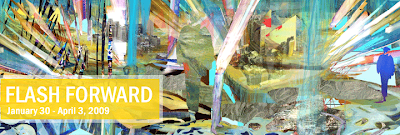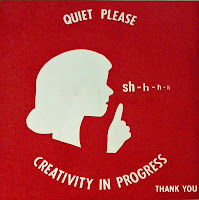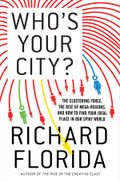When I first started this blog, one of my goals was to highlight creativity in the international, national, and local spotlight. I realize I have been a little lax in the last area.
I hope this post makes up for that. On Friday, I attended the opening of Flash Forward at SPACES here in Cleveland. Well, me and about several hundred other also people attended. This is the first time I’ve been to an opening here that was so crowded I could barely enjoy the art.
However, I did have a chance to check out works by two up and coming artists, each who use traditional materials in very non-traditional and creative ways.
 The first is Jon Nathaniel Cotterman, a local artist working in glass. What is so interesting about his work lies in the way he deconstructs glass goblets. Cotterman reuses the pieces to create box-like sculptures transforming their original decorative and utilitarian purpose into art.
The first is Jon Nathaniel Cotterman, a local artist working in glass. What is so interesting about his work lies in the way he deconstructs glass goblets. Cotterman reuses the pieces to create box-like sculptures transforming their original decorative and utilitarian purpose into art.
The other artist is Yumiko Goto. She works in ceramics and her work is based on nature. One of her most stunning pieces is an installation of many ceramic containers nestled together to create a new larger piece of art that you can move around and admire.
- What could you create out of ordinary materials?





 It’s a skill that all of us use, yet a skill all of us could probably improve. Thinking creatively can help us not only create art but guide us through our daily lives. That’s why I love this list of
It’s a skill that all of us use, yet a skill all of us could probably improve. Thinking creatively can help us not only create art but guide us through our daily lives. That’s why I love this list of 


